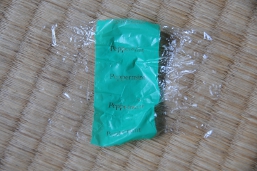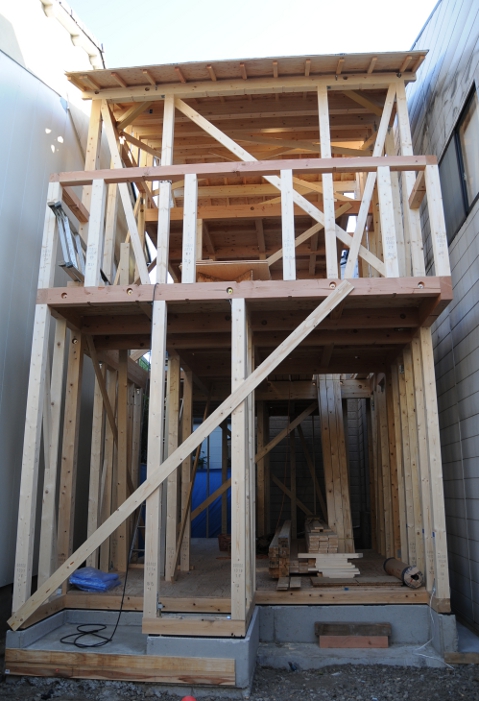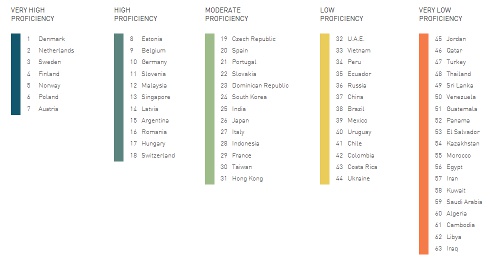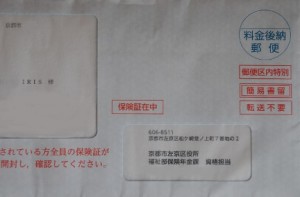In Asia, many large, legally binding transactions, whether business (buying a house or car) or private (getting married) still require the involved parties to use personal seals rather than signatures. Many people use different seals for different purposes, the more important the business, the more important the seal. The transactions mentioned above require a personal seal that is registered with the local ward the person lives in, and is thus of the highest level. These seals – in Japan they are generally called inkan or hanko – are often elaborately carved, unique pieces that can be very expensive and usually accompany a person throughout their (adult) life.
For practical reasons, and in view of a few important things coming up, I have decided to get my own registered seal or jitsuin, and, armed with my own elaborate design based on my last name, I went to a hanko-ya, a seal-carving shop last week. I must have chosen the most uninspired seal makers of town, because there my problems started…
First of all, they could not tell me whether my design would be acceptable by law. This makes sense, as for foreigners, there are strict rules a jitsuin has to adhere to, and apparently, they even differ from one town to the next. So, I went to city hall (which, thankfully, was not far from the shop) and I spent about one hour discussing with a very friendly young staff member which type of seal would be permissible for me. It seems that in Kyoto (and she stressed that emphatically), I can have a seal containing my last name, my first name, or both in either romaji, roman alphabet, or in katakana. I am not allowed an abbreviation of (parts of) the name, for example initials only, and: The thing must be recognisable as my name! This surprised me quite a bit, because I know that these seals for Japanese often contain very old-fashioned kanji that the modern Japanese probably would not recognise. Also, whenever such a seal is used, it must be accompanied with proof of its registration anyway – which you only get with proper identification…
In any case, she was not swayed, so my beautiful self-designed idea based on my last name with lots of flourishes and hidden letters (although all of them were there, I swear!) was out. So, I asked about katakana on my seal and made a quick, improvised sketch of something. After going back to check with somebody in the know, she returned and said: “Yes, this is possible, and it’s very nice, but you first have to register a heikimei.” Excuse me, a what? We could not quite find common ground on this one. Only at home, when checking the kanji she wrote down for me (併記名) it turned out that it literally means “also shown name”, the Japanese translate it as “pronunciation name”, essentially a way of writing your (foreign) name in katakana. So, in order to be allowed to use a seal with katakana, I first have to register those katakana as equivalent with my name. While it sounds a bit odd, it does make sense from a legal point of view. I guess. In any case, after we both had confirmed that I can register both the heikimei and the seal at the same ward office on the same day, I thanked her profusely and went back to the hanko-ya.
There, my problems went from bad to worse. Now they informed me that there was no way they could possibly furnish me with a seal carved in romaji, as this is nothing they are capable of. Then I said, okay, good, here is an easy design of my first name in katakana, with the syllables nicely flowing together. Oh, no, this was not something they could possibly do either, after all there is a machine doing the carving and the machine cannot possibly be told to move that one kana a bit to the left and the other a bit to the right and besides and anyway…
As I did not know any other hanko-ya to go to, I relented, and they took three days to tell that ominous machine in their backyard to carve the most uninspired and most ugly seal they ever made. I showed it to my friends for commiseration, but interestingly they found it cute – they had never seen a katakana seal before. Well, I thought, as long as it does the trick for registration…
 This afternoon, I went to my ward office to register my heikimei and the seal, and to get a seal certificate as proof that the seal is really my official seal. I braced myself for severe difficulties again, but everything went smoothly. An assistant who is only there to assist people – Japanese and foreign alike – to fill out forms and put them on the right chair, filled out all the forms I needed. For the seal registration, I had to put the seal on the registration form and on a small extra slip of paper – the clerk explained that I should make an extra effort there because this imprint would be scanned and thus entered into the database. After maybe 15 minutes time in total and after paying 350 YEN, I received a registration confirmation and the registration card pictured above. If ever I need a new proof of registration, I’ll only need to show this card and a new document will be issued promptly.
This afternoon, I went to my ward office to register my heikimei and the seal, and to get a seal certificate as proof that the seal is really my official seal. I braced myself for severe difficulties again, but everything went smoothly. An assistant who is only there to assist people – Japanese and foreign alike – to fill out forms and put them on the right chair, filled out all the forms I needed. For the seal registration, I had to put the seal on the registration form and on a small extra slip of paper – the clerk explained that I should make an extra effort there because this imprint would be scanned and thus entered into the database. After maybe 15 minutes time in total and after paying 350 YEN, I received a registration confirmation and the registration card pictured above. If ever I need a new proof of registration, I’ll only need to show this card and a new document will be issued promptly.
Japanese bureaucracy does not cease to amaze me. Some things take ages and lots of “it can’t be done” interjections – those are the ones the typical foreigner thinks they should be straightforward – and other things – where you think they are virtually impossible – they have pat down and systemized and everything is finished within five minutes…
Cute anecdote on the side: I was called to the payment counter by name by an older man, whose first question was – in perfect German: “Sprechen Sie Englisch?” “Ich kann das auch auf Deutsch”, I replied and we then proceeded in English after all. I guess he saw my nationality in the paperwork, but I was indeed surprised – you don’t find that many Japanese who speak German.
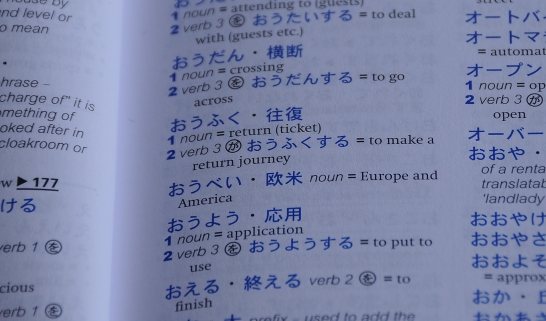 e is a minefield, even if you’re working with people who you think are great foreign-language speakers…
e is a minefield, even if you’re working with people who you think are great foreign-language speakers…

